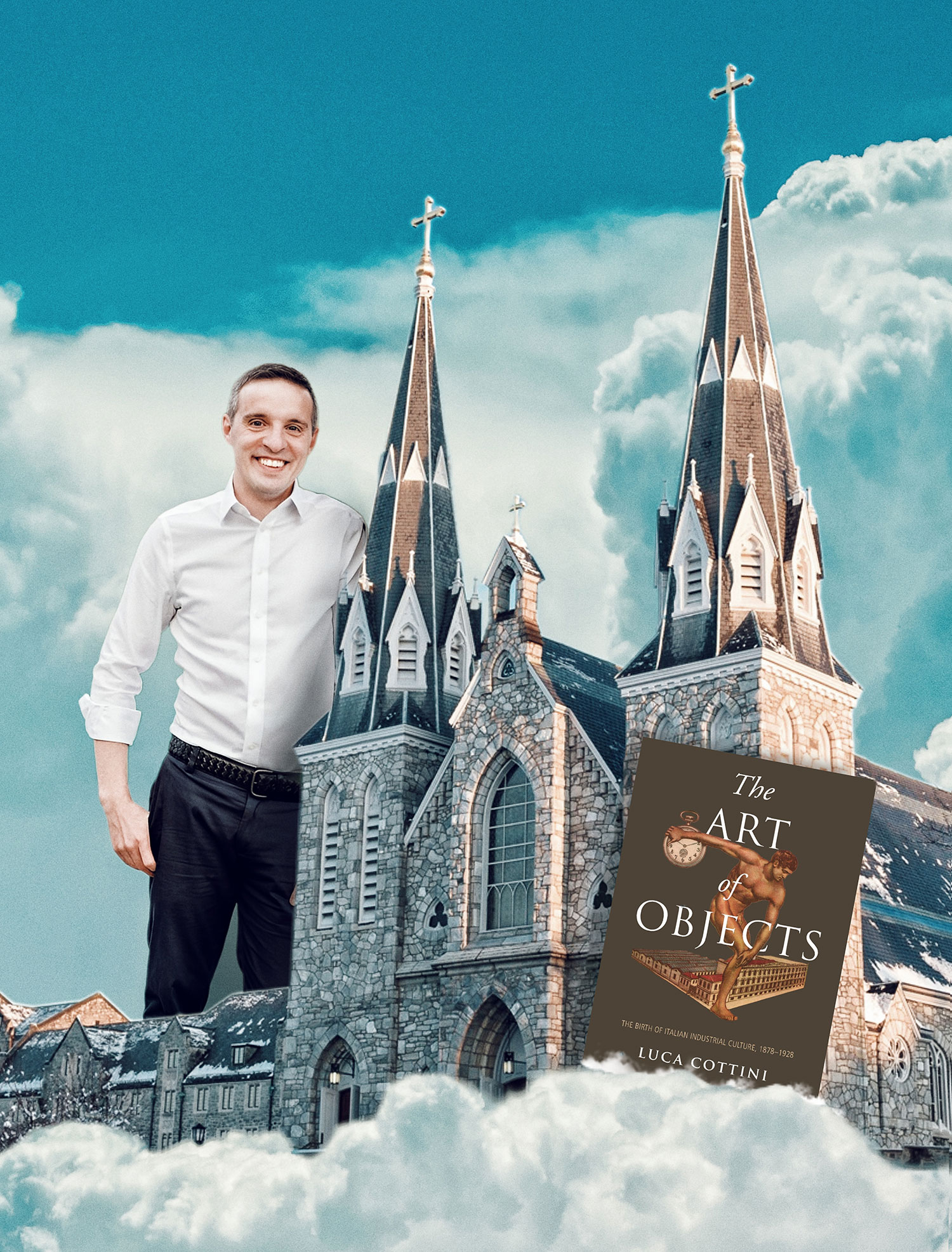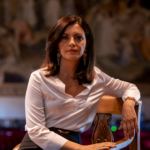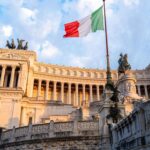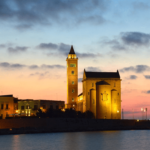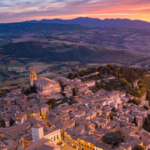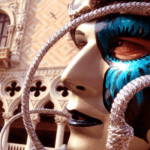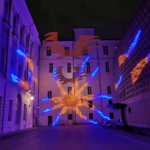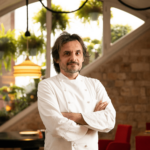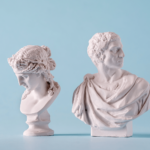With his deep knowledge and infectious enthusiasm, Professor and Author Luca Cottini mesmerizes students of all ages and nationalities, immersing them in the dynamic world of Italian ingenuity and groundbreaking ideas that have shaped our modern civilization. From the fastest nun in the West, Blandina Segale, to fashion icon Valentino Garavani, Cottini reveals Italy’s hidden gems and lesser- known geniuses who have revolutionized art, design, technology, and beyond. Through his engaging lectures, podcasts, and interviews, he introduces these Italian innovators and illuminates their profound impact on shaping our contemporary world. His teachings ignite a passion for exploration and innovation. Professor Cottini empowers a new generation of American dreamers, equipping them with the stories, knowledge and inspiration needed to forge their path of greatness boldly.

Giovanna G. Bonomo: What inspired you to start your podcast and YouTube channel “Italian Innovators”?
Luca Cottini: The project grew out of my work as a teacher and a scholar. Its foundation lies in my academic book “The Art of Objects,” which locates the early soil of Italian industrial culture in the irregular yet creative interactions of Italian entrepreneurs and artists at the turn of the 20th century. After winning an academic prize for the book, I wanted to learn its contents anew to keep it fresh, so I started a podcast that became a YouTube channel. In my innovator profiles, I present the stories of innovative thinkers in various fields, both historical figures like Edoardo Bianchi, Davide Campari, Camillo Olivetti or Alfonso Bialetti, and contemporary innovators like Sergio Pininfarina, Brunello Cucinelli, Fabiola Gianotti, or Michele Ferrero. In both the presentations and the interviews with modern Italian academics, professionals, and entrepreneurs, I try to detect the moment where a creative idea sparked and outlined the path which led them to grow their companies in an original way. Through their different journeys, I uncover a common innovation framework, exploring the Italian idea of business from a technical and aesthetic space as a state of material and intellectual occupation (busyness) aimed at bearing genuine and lasting fruit.
Giovanna G. Bonomo: What contributions does Italian culture make to the rest of the world?
Luca Cottini: Italian culture makes two significant contributions: substance (or rather a particular way of tasting, enjoying, and becoming passionate about the world) and an openness toward connecting languages and mixing media (as exemplified in the synthesis of arts in opera). I propose a complex and intelligible Italy on YouTube, which forces one to move beyond easy assumptions and investigate the operative core of a culture.
Giovanna G. Bonomo: How did your experience in communicating Italy outside of the lecture hall change your perception of contemporary Italy?
Luca Cottini: I acquired a different sense of my scholarly authority, not in connection to my academic titles, but rather in relation to the credible communication of live content—what the Italian writer Manzoni would define as “What is useful, true, and interesting.” The risk of moving out of my comfort zone resulted in a fascinating dialogue with colleagues, students, entrepreneurs, and professionals worldwide and a new multifaceted image of contemporary Italy. Speaking in English coincides with rethinking one’s own heritage, not as an immobile museum, but rather as a living source.
Giovanna G. Bonomo: Did using English as a language for communication help you reinterpret and rediscover your Italian heritage?
Luca Cottini: Using English forced me to look at Italy from the outside and discover what is worthwhile in it. Transporting content into another language means learning its hidden energy. Speaking a second language forces you to rethink your heritage, not as an immobile museum but as a living source. It is the same method as in art, which is memory continuously translated and reinvented. Moreover, English allowed me to open a different space or communicative channel, bringing together other areas and audiences in a common piazza. This plural perspective is essential for observing the Italian model, where cultural imagination and industrial innovation interact continuously. And the two-way communication between these worlds allowed me to achieve substance and lightness, complexity and authenticity, sapere (as knowledge) and sapere (as taste).
Giovanna G. Bonomo: What role does culture play in creating meaningful connections in the digital space?
Sign up for the LF Italy newsletter
Access The Rare and Wonderful, LF Italy’s monthly newsletter. Get our latest interviews and discoveries in wellness, travel, innovation, food & drink, unique stays and more.
Luca Cottini: Culture introduces the possibility of authentic and meaningful connections to the digital space. I like to think of the Internet as a starry sky containing and displaying immense data. For the celestial vault or the screen not to be reduced to a flat surface filled with dots or highlights, an intellectual gaze is needed—someone who can ”read through” (inter-legere), linking the points in constellations, recognizing the relative distance of the stars, and distinguishing the colours of the planets. What a storyteller does is to detect, in the anarchic fabric of our days, a coherent storyline, or in other words, value or relevance. This is also what a content creator does: recognize and identify value. Without a recognized and shared value, even the most beautiful product would appear unsatisfactory to us.
Giovanna G. Bonomo: You often focus on luxury, delving into fashion, interior design, automobile production, or furniture manufacturing. What does Italian luxury look like?
Luca Cottini: Tomas Maier, former Creative Director of Bottega Veneta, once said, “Luxury is a point of view that is more about what you hide than what you show.” Unlike the French model, centered on the importance of chic-ness and exhibition, the Italian way to luxury has to do with what the 16th- century diplomat Baldassar Castiglione called “sprezzatura” (graceful ease): an understated yet highly sophisticated approach to beauty, where the elegant simplicity of the object constructs a non- verbal code that aspires to carry meaning beyond its contingent present. A Bugatti car, a Zanotta chair or a Bottega Veneta purse aim to transcend ephemerality and become works of art.
Giovanna G. Bonomo: Is there a secret behind Italian luxury?
Luca Cottini: The secret recipe of Italian luxury is this notion of elegance as “selection” (from the Latin ‘eligere’, as a deliberate affirmation of a value that aspires to outlast life and shape a uniquely personal experience.
Giovanna G. Bonomo: What would you say is the most excellent form of luxury?
Luca Cottini: The most excellent form of luxury is culture itself, as a creator of timeless value and distinctive personal memory.

